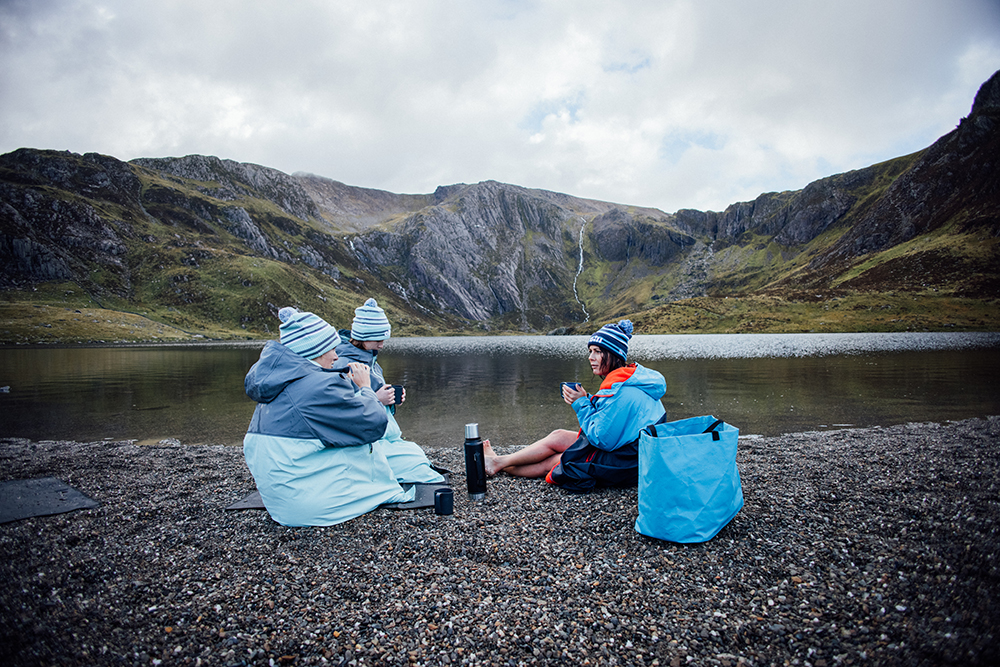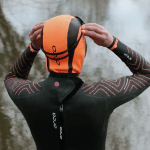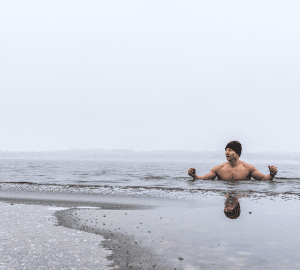
5 things you need for cold water swimming
When it comes to cold water swimming, the devil is in the detail. Having the right kit and accessories for you will make your swim more enjoyable. Whether that is a wetsuit, neoprene gloves and booties or just a swimming costume and a smile, the important thing is that your kit works for you – both in and out of the water.
Here are 5 things to help keep you swimming throughout the autumn and winter period.
1 – Neoprene
Whether you opt for a head-to-toe covering of neoprene, or choose a couple of accessories to keep your hands, feet and/or head warm, neoprene will help to keep you in the water for longer.
Neoprene accessories are by no means a necessity for winter swimming, but they will undoubtedly make the experience more comfortable.
If you are on the market for neoprene accessories, here are some things to look out for:
- Thickness, Flexibility and Fit
In general, the thickness of neoprene accessories can vary between 1mm and 4mm. The thicker the neoprene, the warmer you will be, but at the expense of flexibility.
- Gloves
If you want to swim longer distances in your gloves, flexibility is key. Thick neoprene can affect your stroke by removing any feel of the water, so choose one of the sleeker-styled gloves. The different movement of front crawl or breaststroke may also influence your choice as the movement may impact on water intake – gloves with wrist fasteners or ‘grippier’ edges are particularly good for front crawl.
- Socks
A good neoprene sock will allow you to swim normally and not feel like you’re wearing slippers. A snug fit ensures they work properly as wet socks, allowing a film of water in and keeping it there to warm up rather than flushing through all the time. Most have reinforced soles to provide some protection to the soles of the feet.
- Hats
Your body loses a lot of its heat out through the head, so in colder water a neoprene hat can make a huge difference. Again, a snug but comfortable fit is key.
- Wetsuits
If you decide to wear a wetsuit for your winter swims, thicker neoprene or thermal suits will keep you warmer for longer. Another option would be a neoprene base layer that can be worn either under a wetsuit as an extra layer or on its own.
2 – Warm layers
Having warm layers to change into when you get out of cold water is essential for cold water swimming. Taking a warm coat, a few base layers, a wooly hat and a pair of gloves to change into will reduce your risk of after-drop and potentially developing hypothermia.
A popular choice among swimmers is a changing robe: great for keeping you warm after your swim and saving your modesty when changing into warmer clothes.
3 – Changing mat
A really simple bit of kit, but getting changed on mud, stones or gravel is made much easier and more comfortable with a changing mat. Some kit bags even have an integrated mat.
4 – Kit bag
A big bag that is spacious and easily accessible is really useful when you are carrying two coats, changing robe, flask, hot water bottle, gloves, booties, towels etc etc etc… For such a simple pastime you need a lot of kit to get warm with afterwards! (see our kit bags review)
5 – Headwear
Wearing a swim hat or two is important for keeping your head warm when swimming in cold water. If you don’t plan to submerge your head, then opt for a woolly hat instead.
A few more useful things you didn’t know you needed…
- Thermometer: Check the water temperature of your swims.
- Hot water bottle: What could be more snuggly than a hot water bottle under your coat after a swim?
- Camera: A waterproof camera or action camera is great for documenting your cold water swims. After all, if you don’t instagram it, did it even happen?
- Hot drink: Get warm after your swim with a comforting warm drink.
- Shoes: Swim shoes, crocs or flip flops are all very useful in winter to protect your feet.
- Cake: Some sweet treats will give you something to look forward to when you get out of the water, as well as keep you popular with other swimmers.








